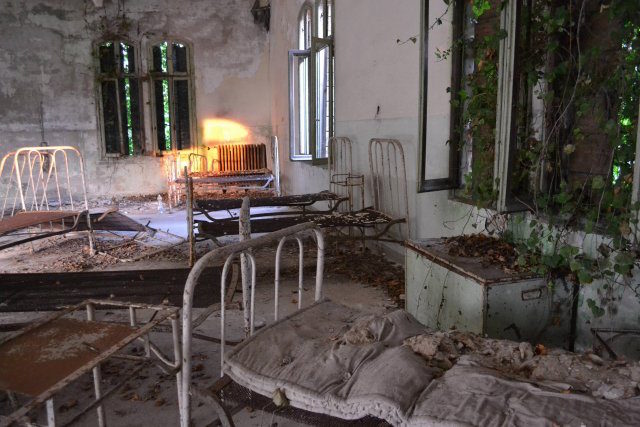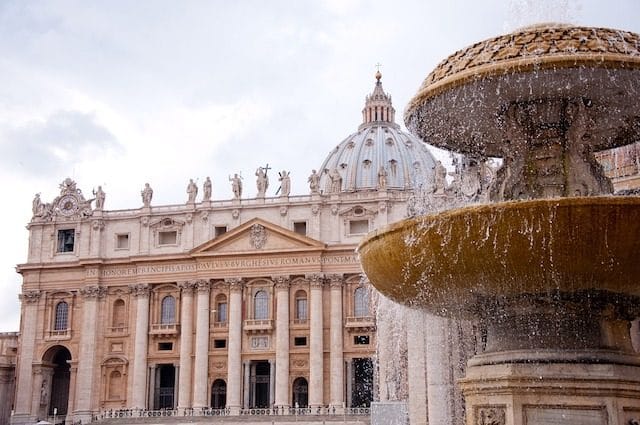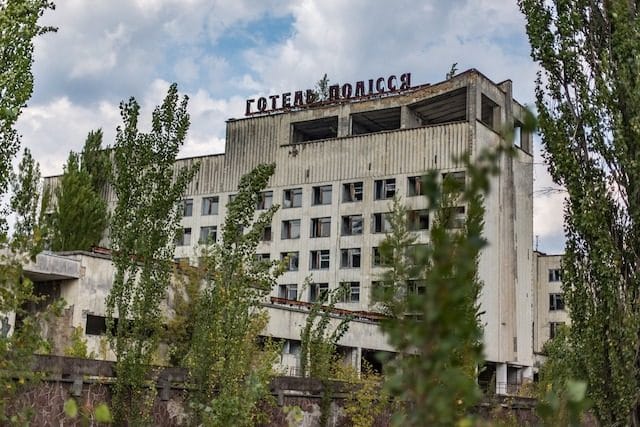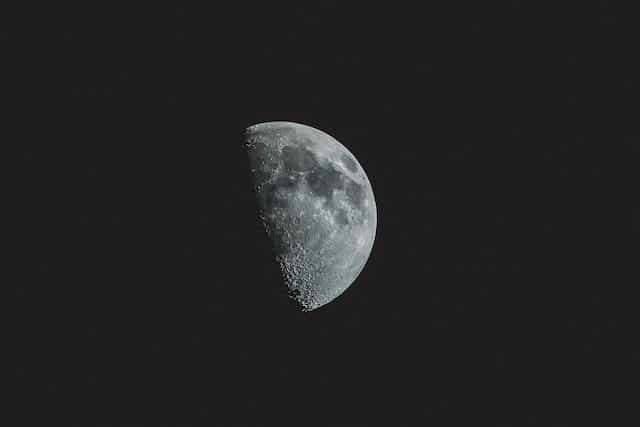Human beings are natural explorers. We as a species would love nothing more than to stake our claim on every piece of land Earth has to offer (and probably every other planet in the Solar System if we had the means). But there are plenty of places where humans have tread that have since become inhospitable to human life, and plenty of places where superstition or downright violent wildlife and locals prevent anyone from stepping foot in those areas.
From dangerous islands literally covered in snakes, violent volcanoes, delicate caves, to the moon herself, here are 10 places we can’t go anymore.
10. Heard Island, Australia
Heard Island Volcano in Australia is located some 4,000 kilometers southwest of the southern Indian Ocean and 2,000 kilometers from Davis Station, Australia’s base in Antarctica. Shortly after the island and its sibling, McDonald Island, were discovered, settlers moved in and basically wiped out the native seal population.
The island is home to a rather large shield volcano named Big Ben, which is so geologically active, that it has greatly contributed to the growth of the total area of land that Heard Island has to offer. Heard and McDonald Island is home to the only active volcanoes in Australia.
The island wasn’t officially made part of the Commonwealth of Australia until 1947, and it wasn’t made a World Heritage Site until 1997. Because of its remote location and proximity to the arctic, the island, and the volcano are great places for wildlife like penguins, but the conditions are quite inhospitable to human occupation.
After it was made a World Heritage Site, the island itself was made off-limits to human traffic.
9. Snake Island, Brazil
Judging by the shape of Snake Island, you might think that it gets its name solely from that, but such a judgment would be a deadly mistake. There’s a very good reason why locals in Brazil would never dare step foot on this island, as it is littered with deadly snakes.
A local legend tells of a fisherman’s body that was found adrift in a pool of his own blood after venturing too close to the island.
Snake Island is home to the golden lancehead snake, one of the deadliest types of pit viper in the world. These monster serpents can grow to be .30 to .45 meters in length and there are nearly 4000 of them on the island, that’s about two snakes for every square foot of space. Additionally, the venom is so powerful that one bite can leave a person dead within an hour.
Understandably, the local government has made it illegal for people to venture to the island for this reason.
But believe it or not, this island used to be inhabited, at least for a short period of time. Legend suggests that in the late 1920s, the island’s lighthouse keeper and his family were killed by vipers. Today, the only humans permitted on Snake Island are from the Navy, who occasionally visit to perform upkeep and ensure no one steps foot on its snake infested surface (but seriously, who would want to?).
8. North Sentinel Island, Andaman Islands
North Sentinel Island has been dubbed one of the most difficult places to visit as well as one of the most dangerous, as the natives that inhabit it will attack anyone on sight and refuse to engage in communication.
The situation is so bad, that India has actually made it illegal for anyone to visit the island, or to attempt to make contact with the tribe that inhabits it. Little is actually known about North Sentinel Island, or its people since most of it is covered in lush forestry.
In 2006, two fishermen who washed up on shore were quickly attacked and murdered by the locals. Any helicopters that fly overhead to deliver parcels, food, or supplies are fired on by arrows or stones. No one is really sure how many of these Sentinelese people actually live on North Sentinel Island but estimates suggest the number could be between 50 and 400 people. These people have lived in seclusion on the island for at least 60,000 years, and it appears that they do not want that to change.
7. Lascaux Cave, France

Lascaux Cave is a Paleolithic cave system that features some of the most famous cave paintings ever found. It was discovered by a few boys who stumbled into the caverns while climbing down a foxhole their dog had fallen into.
The cave is located near the village of Montignac in the Dordogne region of France and houses close to 600 paintings of animals and other items which cover most of the interior walls. While the caves seem to have been used primarily by Paleolithic artists, it’s been suggested that a few of the chambers may have been used for residents.
The cave was closed to humans in 1963, as it was discovered that human visitors caused algae to grow on the walls, ruining the priceless cave paintings. Despite this action, fungi continue to spread through the cave, and efforts are ongoing to protect the artwork on the walls.
6. Poveglia, Italy

Poveglia is thought to be the most haunted island in Italy and was the infamous location where Italian officials sent their plague-infected citizens to literally rot. Local Italians know the legends of this supposedly haunted island well, and as such it would be extremely difficult to find anyone who would dare set foot on its shores.
While it’s well known that the island was used during the outbreak of the Black Death to house and care for the infected of Italy, the island has also been used for the same purpose in other pandemics, and later it was the site of a mental asylum. Basically, if a resident showed signs of being sick, either mentally or physically, the Italian people would ship them off to the island for “treatment.”
It’s said that the ghosts of plague and mental asylum victims wander the island, and looking at the ruins that dot its surface, it’s easy to see why. The original asylum grounds are filled with rotting beds, and the remnants of open pits that were once filled with plague victims are still filled with human bones.
While it’s not illegal to go to the island, no boats stop there, and the Italian tourism board prohibits travel to there.
At least, officially.
There is an off the books, lengthy application process that will allow would-be ghost hunters to set foot on its cursed shores, though.
5. Vatican Secret Archives, Vatican City

The Vatican’s Secret Archives contain more than 35,000 documents detailing various histories throughout the church’s existence, including Martin Luther’s banishment from the church which led to the formation of Protestantism, a letter from Mary Queen of Scots begging for her life after she was caught plotting to kill Queen Elizabeth I, and countless other artifacts that any researcher would gladly give their left leg to examine.
While in the late 1800s, the archives were briefly opened up to researchers, most Catholics are not permitted into archives until they reach 75 years of age.
Today, the archives are still sealed from prying eyes, and there is one document especially that is off-limits to outsiders, and that is the controversial record detailing the ongoing issue of children who have been abused by the members of the Catholic church.
Since the Vatican is akin to its own sovereign nation, the Pope can do whatever he likes when it comes to these records, and it doesn’t look like anyone will gain access to them anytime soon.
4. Ise Grand Shrine, Japan
The Ise Grand Shrine in Japan is simultaneously one of the oldest structures on the island and one of the newest. That’s because Japan’s government spends upwards of 500 million dollars every 20 years to painstakingly rebuild the shrine in a new location.
Great care is taken in ensuring that the new Ise Grand Shrine is an exact replica of its predecessor. This has been done since the 8th century and represents the Shinto belief in death, renewal, and the impermanence of all things.
Given the fact that when a new shrine is built, the old one is torn down, it’s basically impossible to visit any of the shrine’s previous iterations.
Though, it is somewhat amusing to note that for a brief period of time every 20 years, the shrine exists in two locations at once.
3. Chernobyl Exclusion Zone

Since the nuclear disaster in Chernobyl, the 30-kilometer-wide area has been completely off-limits to human occupation due to the extreme levels of radioactivity still measured in the area. This radioactivity has caused major disruptions to life in the area. Dead trees no longer decay within the exclusion zone and a black fungus with the unique ability to eat radiation known as Cladosporium sphaerospermum grows on the walls within the city.
Since the trees no longer decay, the area is constantly at risk of fires breaking out, and when this happens, radiation can spike up to 2.3 microsieverts per hour (as was seen in March 2020), well above normal levels for the area.
While it’s true that the exclusion zone is blocked off from pretty much anyone (and for good reason), there is still a small population of senior citizens and workers who live within the Zone of Alienation. While the government has attempted to get these people to leave, their unsuccessful attempts to do so have resulted in the Ukrainian government allowing them to live within the exclusion zone with limited access to services, albeit begrudgingly.
And the workers who are permitted inside the zone work on the safe containment of radioactive materials as well.
The core of the Chernobyl Nuclear Power Planet, however, is completely off-limits to ordinary people, as something absolutely terrifying lurks within it. The “Elephant’s Foot” is a molten piece of radioactive material that is still burning today and slowly melting through the floor of the reactor.
2. Surtsey Island, Iceland
Named after the fire god in Icelandic mythology, Surtsey Island is a geologically active volcano in Iceland and just so happens to be one of the newest islands in geological history. It was born in 1963 from a violent volcanic eruption in the Atlantic.
Over the course of three and a half years, the volcanic core of Surtsey built the island up to 2.5 square kilometers. Elevations on the newly formed island reach up to 171 and 290 meters above sea level with an overall area of 1.4 square kilometers.
After the surface cooled down, biologists, geologists, and ecologists flooded the island to study its formation. Finally, in 2008, the island was declared a UNESCO World Heritage Site so that scientists could study how animals and plant life colonize a new environment like Surtsey.
Meaning, of course, no humans are allowed on its surface.
1. The Moon

Humans haven’t set foot on the moon since the Apollo program ended, and a lot of scientists have weighed in on why that is. Part of the reason may be because of the immense cost that is required for getting astronauts beyond low earth orbit, but another reason may be tied to the volatility of Lunar regolith (or, moon dust).
During the Apollo missions, this moon dust was a real nuisance. Regolith is extremely fine, like glass, and carries a magnetic charge due to the fact that the moon’s surface is constantly bombarded by the solar wind. This causes it to stick to everything, getting in the lander, on the suits, in the astronaut’s lungs and eyes, and wearing their boots down to such a degree, that a seal breach was possible in some cases.
While there are plenty of other reasons why we haven’t been back to the moon, like gravity’s harmful effects on the human body (as mentioned in our list on why Mars is a terrible option for colonization), there is currently no viable solution for dealing with moon dust, which poses a serious risk to any manned mission sent there.
3 Comments
Toptenz. Please get your act right.
Number10 entry mentions proximity to arctic. Common. We are not listverse.
Hi Anirudh,
I’m not sure what the problem is. The sentence is saying that the island is “2,000 kilometers from Davis Station, Australia’s base in Antarctica.” Is that distance incorrect? We are happy to issue a correction if you can provide more clarification and a reliable reference for your claim.
Thanks!
The sentence is correct. The distance is not quite 2,000 miles to Davis Station, so the author saying “some … 2,000 kilometers” is correct since he’s approximating. The distance is 1,720km, as noted in one of the linked articles, so the author is clearly rounding it up to say, essentially, “it’s about 2,000 kilometers away.”